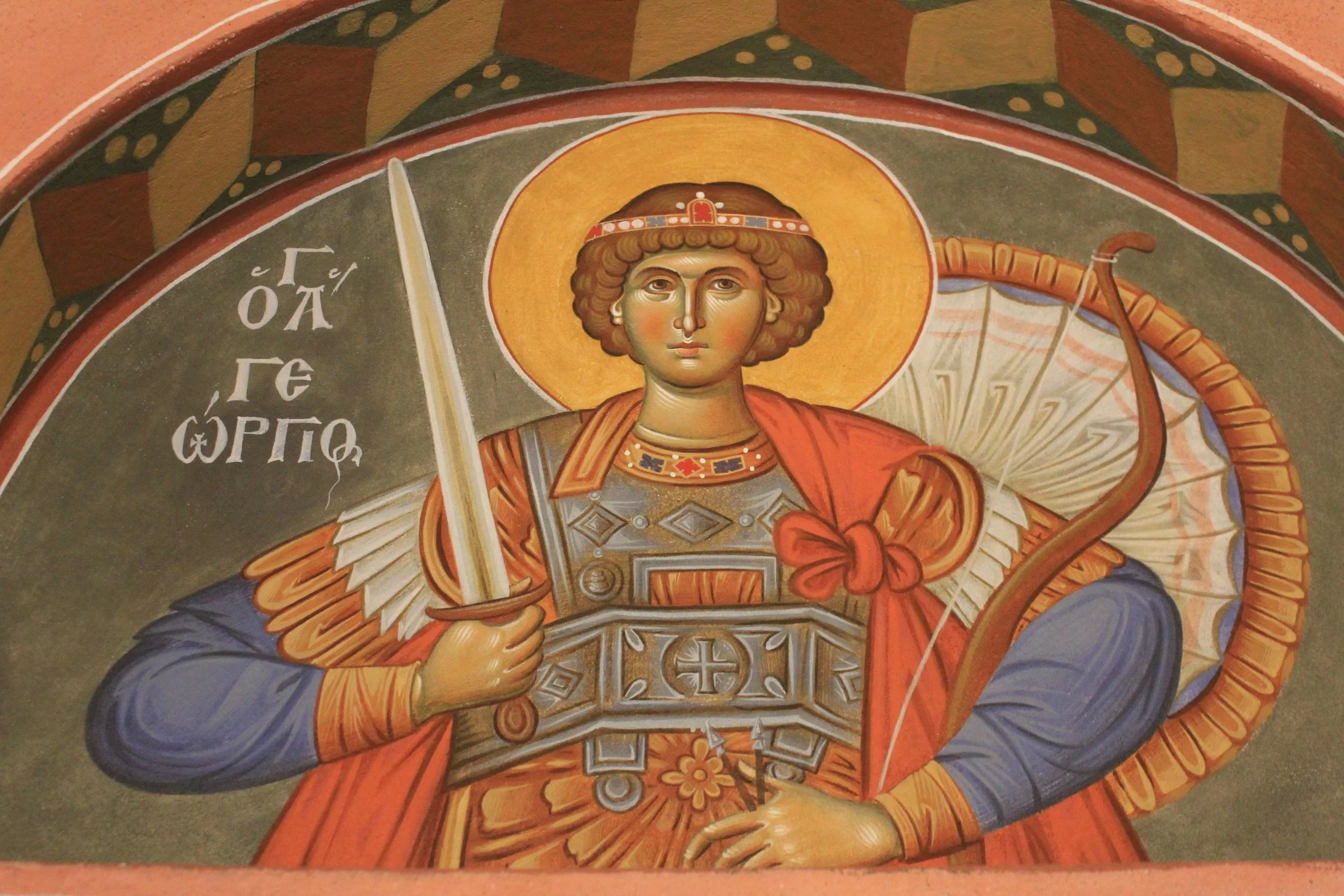From the Apostolic era to the 21st Century
St. George Orthodox Church traces its roots to the very beginning of Christianity, in Antioch, where the followers of Jesus were first called Christians and where its first bishop was St. Peter. In Altoona, St George had its beginnings with the arrival of approximately 100 families or individual Orthodox Christian immigrants from the Middle East beginning in 1891 and peaking in the early 1920s. Beginning in 1904, joint services were held in various homes and halls along with Greek Orthodox immigrants. These joint services lasted until the end of World War I when each began to establish its own church.
In July of 1918, Archbishop Aftimios Ofiesh, visited Altoona and encouraged the immigrants to form a parish. By January 1919 a mission was formed. In 1922 the women formed the St. Mary’s Society for service to the church and in1923 the church obtained its Charter. For four years services were held at St. Luke’s Episcopal Church. In 1928, the Christian and Missionary Alliance Church at 805 15th Street became available and was purchased and remodeled with an Orthodox sanctuary.
The first permanent priest was Rev. George Kattouf who arrived in 1924 and was instrumental in acquiring the church building. Among his first accomplishments was the establishment of a Sunday School and it has been on-going to the present day. Father Kattouf served the church for 27 years.
In the 1930s, despite bread lines and the Depression, the community grew, and there were many baptisms and marriages. A children’s choir was formed at this time. World War II arrived on Pearl Harbor Day, December 7, 1941. Forty nine members of the congregation joined the armed forces, two of which did not return. During the war, St. George was active in the war effort. Money was collected for the purchase of bonds in the Victory War Loan program. Although a small group, St. George’s congregation collected $7,050 in bonds for the war effort.
In 1948-1949, an adult choir was formed. It was initially taught and directed by Howard “Pop” Lindaman, the choral director at Altoona High School. The choir used the first Orthodox music book published in English in America (Gelsinger, 1939).
With Altoona’s redevelopment of large parts of the city in the 1960s, the church was scheduled to be razed. The present church was built at the edge of town at 519 58th Street in 1971. During the latter part of that decade, Rev. Basil Lascelles, was responsible for remodeling the edifice into traditional Orthodox architecture, complete with domes and iconography on walls and ceiling by leading iconographers.
Since the 1970s, the church sends its children to the Archdiocesan Camp, an hour away, in Ligonier, Pennsylvania at the Antiochian Village Heritage and Learning Center where lectures, retreats, choir institutes and seminars are also a mainstay. The center includes a museum and extensive library open to the public.
Currently many parishioners include non-Orthodox spouses who converted to the faith. Others were individual converts who were seeking a Bible-based church steeped in the traditions of the early Christians, discovered Orthodoxy, and were drawn to St. George. From the 1980s, when a nationwide movement of Evangelical Christians embraced the faith, St. George became one of the beneficiaries. Over the past 40 years, many individuals have been received into the church from all denominations. Today, almost 90% of the clergy in the USA are converts and this has been reflected in the clergy of St. George. At present, Rev. Isaac Danevicius serves the parish, having arrived at St. George with his wife and children, Solomon, Seraphim, Josiah, Xenia, and Eliana on August 1, 2018.
St. George is a welcoming church that has maintained its growth by adhering to the Biblical faith and traditions of the first centuries of Christianity. Lectures, workshops, Sunday School, choir, a lending library, and camp have been an essential part of its outreach to the community. All are welcome.





